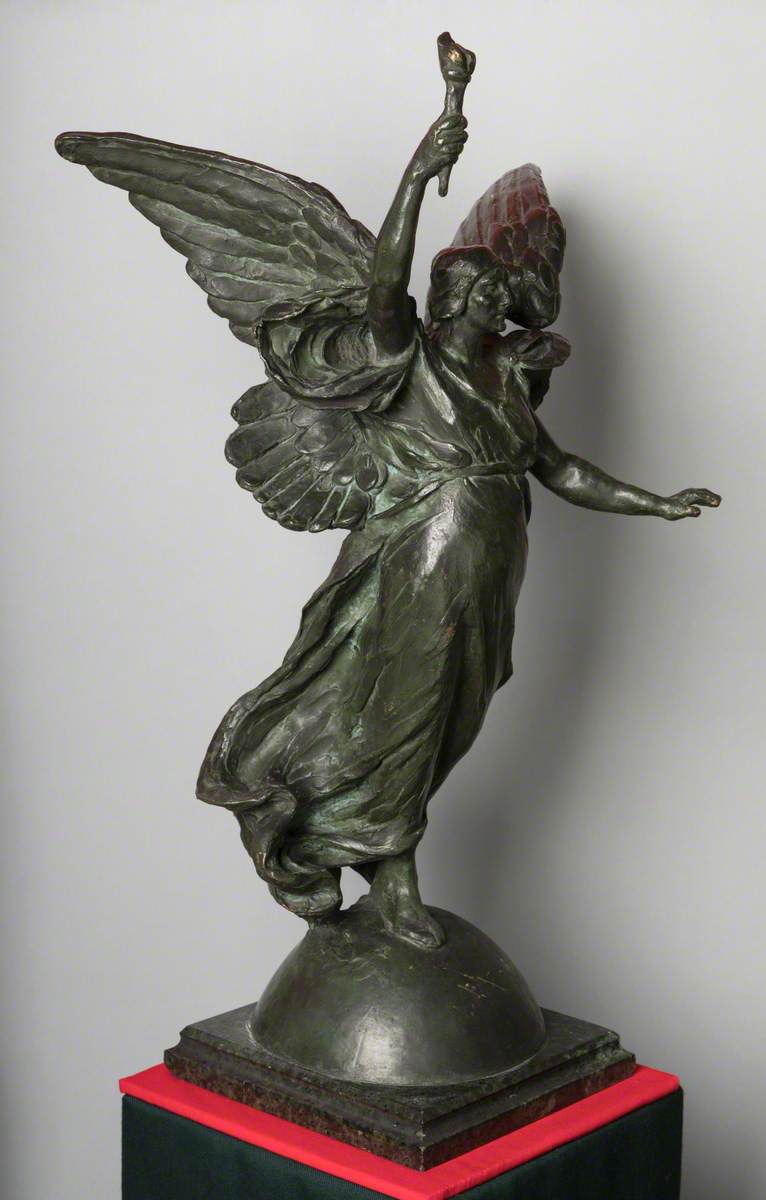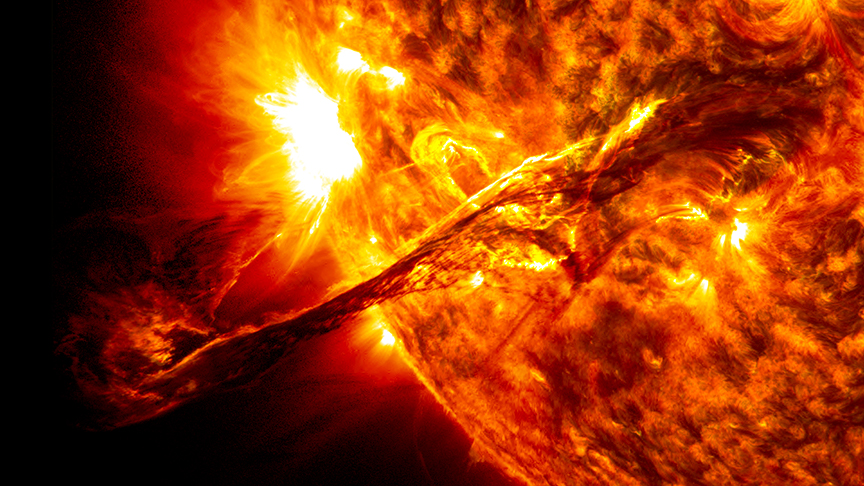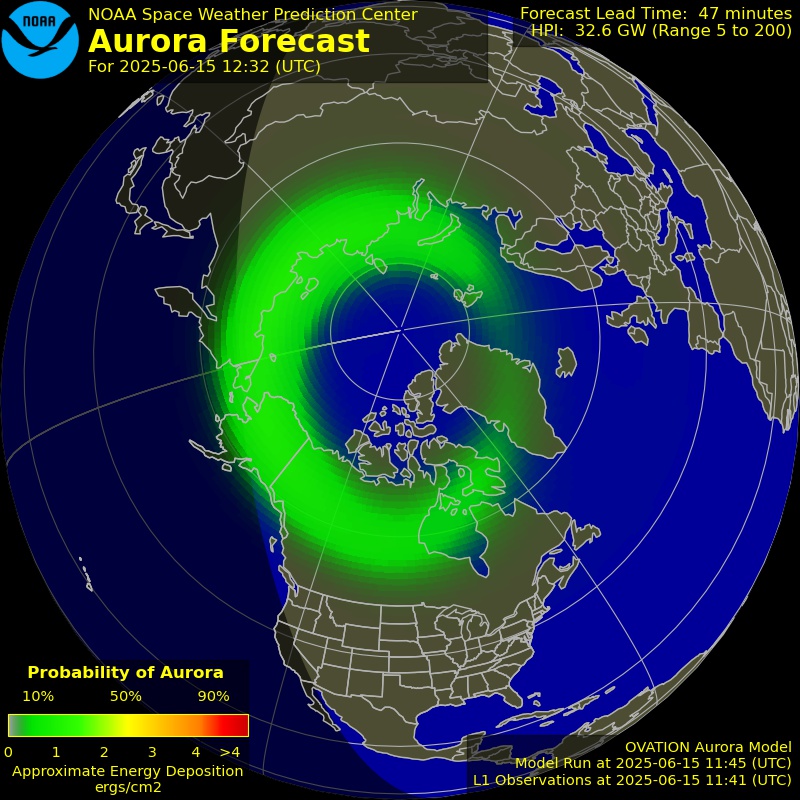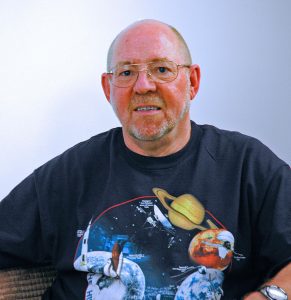Christmas lights now illuminate our towns and streets.
But this year there may be more than twinkling light bulbs to enjoy.
We may be treated to a display of natural Christmas lights, the aurora.
In recent weeks, many countries outside the Arctic Circle have been treated to the Northern Lights.
We’ll find out what causes them and why they are so active at the present.
We’ll also talk about photographs of aurorae.
The Name
The term ‘Aurora Borealis’ was coined by Galileo back in 1619.
Aurora was the Roman goddess of the dawn and Boreas was the god of the north wind.

In the southern hemisphere we have the Aurora Australis.
Auster was the god of the south wind.
The Cause
Basics
Auroral displays are caused by particles blasted out from the Sun.
The fast-moving particles hit the Earth’s atmosphere.
Then the Earth’s magnetic field funnels the particles towards the north and south poles.
The solar particles collide with atoms in our air.
The atoms glow and we see the Northern – and Southern – Lights.
The Sun
The Sun is an active star.
Nuclear fusion reactions at it’s centre send energy to its surface. The Sun shines.

Active Sun: NASA
But the Sun’s surface is stormy.
We see active areas like sunspots and solar flares erupting from the surface.
CMEs
The largest outbursts are called Coronal Mass Ejections, CMEs.
Like sunspots and flares, CMEs are products of the Sun’s enormous magnetic field.
These huge explosions send charged particles – protons and electrons – into space.
This plasma travels at terrific speed, up to 7 million miles per hour.

The particles take around 18 hours to reach Earth, though slower CMEs may take a couple of days.
Collision
If a CME is blasted in Earth’s direction, it impacts our atmosphere.
The Earth’s magnetic field sends the Solar particles spiralling towards the north and south poles.

Auroral Oval: NOAA
The high-energy Solar particles collide with atoms and molecules in our air.
The air particles begin to glow, like atoms in a neon light tube.
The glowing particles form the aurora, the Northern Lights.
Colours
The colour of the lights depends on which atoms in our atmosphere are made to glow.
These atoms are found at different heights above the ground.
Red: comes from oxygen high in the atmosphere, above 180 miles.
Green: from lower oxygen atoms, less than 180 miles high.
This is the most common colour in the Northern Lights.
Blue, red, violet: from nitrogen molecules low in the atmosphere.
Where to see the lights
Go North!
Solar particles are deflected towards the Earth’s poles, so that’s where the aurorae are seen best.
The aurora forms an oval of activity around the north pole.
Inside that oval, the aurora fills the sky.
People travel thousands of miles to be inside that oval.
Iceland, Norway, Sweden, Finland, Canada and Alaska are popular aurora-tourist destinations.
There they can experience the true wonder of the Northern Lights.
Outside the Oval
Normally an auroral display is restricted to high latitudes around the Arctic Circle.
However, recent CMEs have been so powerful that aurorae have been seen at latitudes far south of the Arctic.

Aurora near Sheffield: Photo Dennis Ashton
I have seen images from the USA as far south as Florida.
And we have seen them quite clearly in the UK.
When to see the lights
The Active Sun
Activity on the Sun is not constant.
It varies over the years in a cycle of activity.
The Solar Cycle sees activity peaking every 11 years.
Active Sun with sunspots: NASA
Right now we are in the peak of activity.
It will last for the rest of the year and into 2025.
It is aurora season now!
Eyes v Camera
Inside or near the Arctic Circle, an aurora is truly spectacular.
The lights dance slowly all around in shimmering curtains of incandescence.
They are dazzlingly bright to the eyes.
A camera simply records an impression of what you actually saw.
It’s different for aurorae at lower latitudes.
Here the lights are not so intense. They may appear as just a dull glow in the northern night sky.
However smartphone cameras are much more sensitive to dim light than our eyes.
They show the auroral glow more brightly.
With a little editing, like increasing the saturation, we can produce vivid images of the Northern Lights.

Northern lights, Sheffield, October 2024. Photo: Jane Walker
If you edit your images like this, it’s not cheating!
I’ve heard some people say that if it’s not what you saw it’s not real. Not true!
OK, it’s not the aurora you saw but those colours were there.
Our eyes are just not sensitive enough to resolve them.
What you are doing is some basic astrophotography.
Virtually every image of space objects is processed in some way.
Then we can see planets, star clusters, galaxies etc in detail.
It’s the same for seeing the colour and structure of an auroral display.
My Alaskan Aurora
The best display I have seen was in Alaska.
We were in a tiny village called McGrath, watching the Iditarod, a 1000-mile sled dog race.
One night we were standing on the frozen Kuskokwim river, waiting for a team to come by.
As I looked to the stars, a pale green light materialised in the sky.

They brightened into curtains of lime-green, fringed with red.
Soon the glowing drapes danced elegantly around us, stretching from horizon to zenith.

Inside the Arctic Circle
Recently, Wonderdome presenter Annette went to Norway to catch an aurora.
At first rain seemed to have spoiled the trip.
But to Annette’s delight the sky cleared and the lights danced around her.
‘Breathtaking’ was her report of the magical display.



Last year our friend Claire had a wonderful week mushing with a sled dog team in northern Sweden.
The Northern Lights were magnificent, as her photos show.

Lapland Aurora. 2 photos by Claire Blank

Aurora Forecasts
There are several websites that carry forecasts for auroral displays.
Lancaster University runs a good UK site, AuroraWatch UK .
Lights in your sky
With the Sun at its peak activity, the Northern Lights will return to our skies in the coming months.
There will be superb aurora inside the Arctic Circle.
If seeing an aurora is on your wish list, 2025 is a good time to go.
But the Northern Lights may come south to Britain again.
It may happen during this festive season or maybe next year.
An aurora is not just for Christmas.
On behalf of all members of the Wonderdome team, I wish you a Merry Christmas and a starry New Year.

The author: Dennis Ashton is a Fellow of the Royal Astronomical Society and a Wonderdome presenter.
In 2024, Dennis received the Special Contribution award from the British Association of Planetaria.
Would you like to hear more Astronomy news?
Do you want to to find out about our upcoming public events?
Follow WonderDome Portable Planetarium on Twitter and Facebook or go to our web site wonderdome.co.uk

